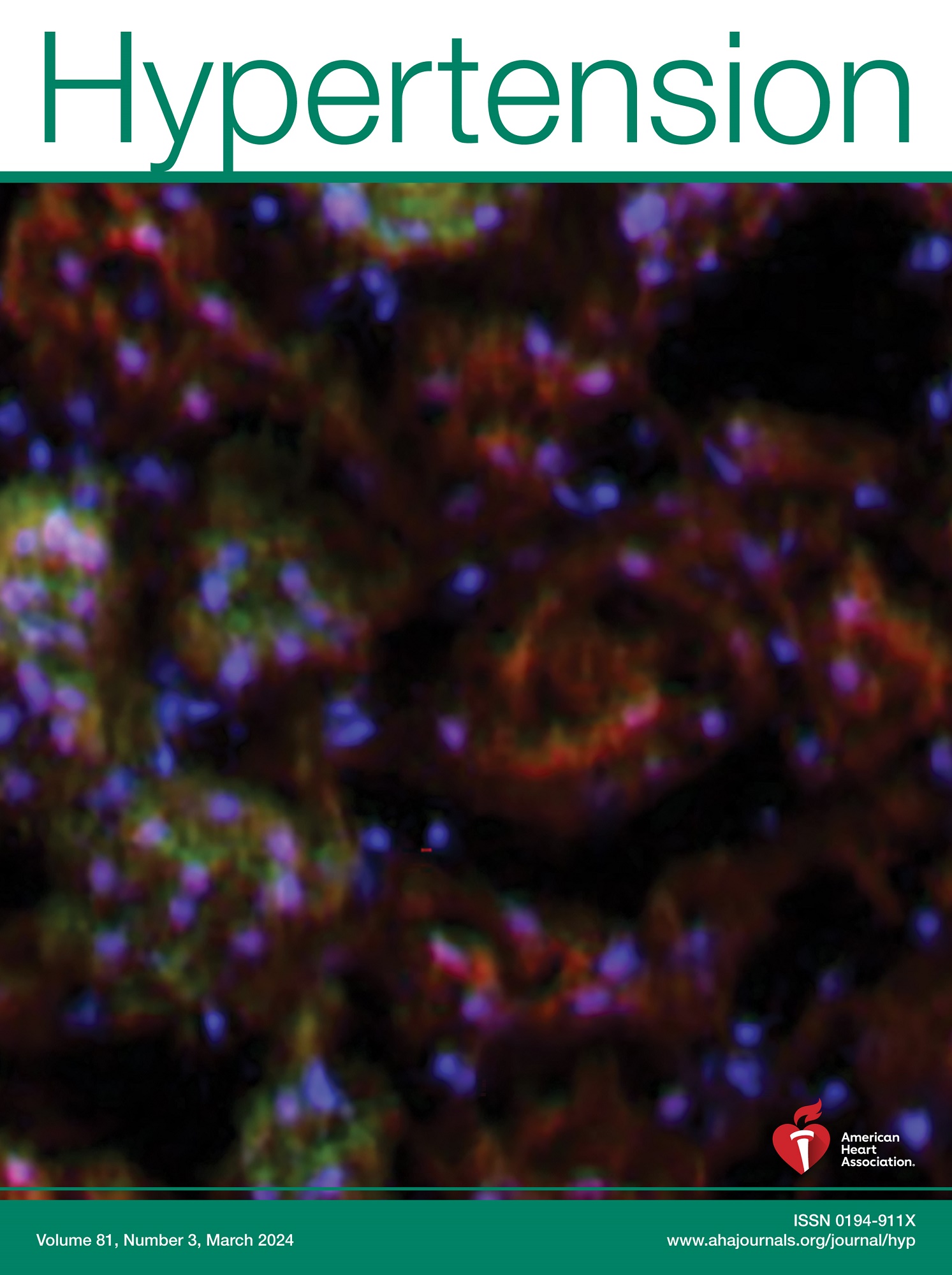Impact of Blood Pressure Self-Management on Vascular Remodeling After Hypertensive Pregnancy.
IF 8.2
1区 医学
Q1 PERIPHERAL VASCULAR DISEASE
引用次数: 0
Abstract
BACKGROUND Hypertensive pregnancy disorders are associated with long-term adverse cardiac and vascular remodeling postindex pregnancy. The POP-HT trial (Physician Optimised Postpartum Hypertension Treatment) demonstrated that improved puerperal blood pressure control leads to reduced blood pressure and beneficial cardiac remodeling during the first year postpartum. This study describes the impact on postpartum vascular remodeling. METHODS A prospective, randomized, open-label, blinded end point trial in a single UK hospital where 220 women were assigned 1:1 to intervention (self-management via physician-guided antihypertensive titration) or control (usual postnatal care via primary care doctor±midwife). Eligible participants were ≥18 years, with preeclampsia or gestational hypertension and requiring antihypertensives on discharge. Prespecified secondary vascular outcomes included aortic blood pressure and pulse wave velocity measured by Vicorder at baseline and 9 months postpartum, and additional cardiovascular magnetic resonance measures of aortic distensibility were performed. RESULTS There were no baseline differences in aortic blood pressure or pulse wave velocity but by 9 months postpartum, aortic diastolic blood pressure was -5.2 mm Hg lower ([95% CI, -8.0 to -2.2]; P<0.001), and pulse wave velocity was -0.71 m/s lower ([95% CI, -1.42 to -0.006]; P=0.048) in the intervention arm compared with the control arm, which corresponded with greater aortic distensibility by 0.78×10-3 mm Hg-1 ([95% CI, -0.01 to 1.55]; P=0.046). CONCLUSIONS Postpartum blood pressure self-monitoring combined with physician-guided medication titration is associated with reduced central arterial stiffness during the first year after a hypertensive pregnancy, in addition to the previously demonstrated effects on blood pressure and cardiac remodeling. REGISTRATION URL: https://www.clinicaltrials.gov; Unique identifier: NCT04273854.高血压妊娠后血压自我管理对血管重构的影响。
背景:高血压妊娠障碍与妊娠后长期不良的心脏和血管重构相关。POP-HT试验(医生优化产后高血压治疗)表明,改善产后血压控制导致产后第一年血压降低和有益的心脏重塑。本研究描述了对产后血管重塑的影响。方法一项前瞻性、随机、开放标签、盲法终点试验,在一家英国医院进行,220名妇女按1:1的比例被分配到干预组(通过医生指导的降压滴定进行自我管理)或对照组(通过初级保健医生±助产士进行常规产后护理)。符合条件的受试者年龄≥18岁,患有先兆子痫或妊娠期高血压,出院时需要抗高血压药物。预先指定的次要血管结局包括在基线和产后9个月用Vicorder测量主动脉血压和脉搏波速度,并进行额外的心血管磁共振测量主动脉扩张。结果与对照组相比,干预组在主动脉血压和脉波速度方面无基线差异,但在产后9个月时,干预组的主动脉舒张压降低了-5.2 mm Hg ([95% CI, -8.0 ~ -2.2]; P<0.001),脉波速度降低了-0.71 m/s ([95% CI, -1.42 ~ -0.006]; P=0.048),这与主动脉扩张度增加0.78×10-3 mm Hg-1 ([95% CI, -0.01 ~ 1.55]; P=0.046)相对应。结论:产后血压自我监测结合医生指导下的药物滴定与高血压妊娠后第一年中央动脉僵硬度降低有关,除了先前证明的对血压和心脏重塑的影响外。REGISTRATIONURL: https://www.clinicaltrials.gov;唯一标识符:NCT04273854。
本文章由计算机程序翻译,如有差异,请以英文原文为准。
求助全文
约1分钟内获得全文
求助全文
来源期刊

Hypertension
医学-外周血管病
CiteScore
15.90
自引率
4.80%
发文量
1006
审稿时长
1 months
期刊介绍:
Hypertension presents top-tier articles on high blood pressure in each monthly release. These articles delve into basic science, clinical treatment, and prevention of hypertension and associated cardiovascular, metabolic, and renal conditions. Renowned for their lasting significance, these papers contribute to advancing our understanding and management of hypertension-related issues.
 求助内容:
求助内容: 应助结果提醒方式:
应助结果提醒方式:


